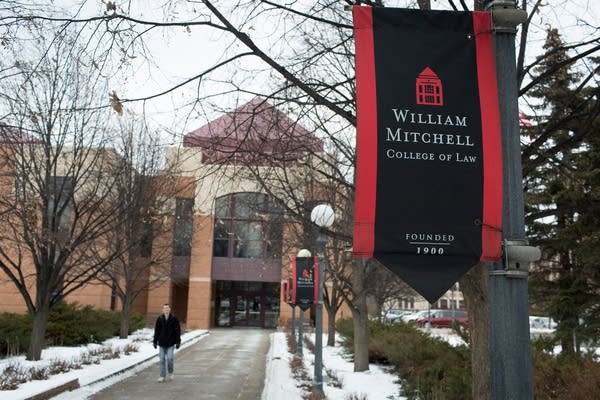Hamline, William Mitchell law schools to merge

The William Mitchell College of Law will merge with Hamline University's law program. The combined school will be headquartered at William Mitchell's St. Paul campus, pictured here on Friday.
Jennifer Simonson | MPR News
Go Deeper.
Create an account or log in to save stories.
Like this?
Thanks for liking this story! We have added it to a list of your favorite stories.


